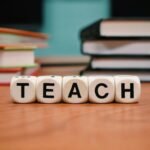If you work in a school that serves students with disabilities, you may be familiar with the term “related services.” But what does it mean, and why is it crucial for special education? In this article, we’ll explain the concept of related services, how they support special education in K-12 schools, and how they benefit your students.
What are Related Services?
Under the Individuals with Disabilities Education Act (IDEA), related services are defined as “transportation and such developmental, corrective, and other supportive services as are required to assist a child with a disability to benefit from special education.” In simpler terms, related services are the supports that help students with disabilities access the general education curriculum and participate fully in school activities.
Some common examples of related services include:
- Speech-Language Pathology: This service supports students with communication disorders, such as speech sound errors, language delays, stuttering, or voice issues. A speech-language pathologist (SLP) evaluates, diagnoses, and treats these challenges, while also providing guidance to teachers and parents.
- Occupational Therapy: Students with difficulties in fine motor skills, sensory processing, or daily living tasks benefit from occupational therapy (OT). An OT helps improve skills necessary for independence and success in both school and life.
- Physical Therapy: Students who struggle with gross motor skills, balance, or mobility can receive support from physical therapy (PT). A physical therapist works to improve coordination and help students navigate the physical environment of the school.
- Counseling Services: For students with emotional, behavioral, or social challenges, counseling services can provide individual or group therapy, crisis intervention, conflict resolution, and positive behavior support. These services help students improve their mental health and well-being.
- Transportation Services: Some students may need special transportation arrangements to get to and from school safely. This may include adapted buses, vans, or reimbursement for travel costs.
In addition to these, there are other related services, such as audiology, interpreting services, assistive technology, and school health services. While the types of related services may vary, each state may have its own definition and criteria for what qualifies as a related service.
Who is Usually Eligible for Related Services?
Not every student with a disability will need or qualify for related services. To be eligible, the student must usually:
- Have a disability as defined by IDEA, such as autism, intellectual disability, specific learning disability, or emotional disturbance.
- Have an Individualized Education Program (IEP) outlining the student’s goals, accommodations, and services.
- Require related services to fully benefit from special education, as determined by the IEP team, which consists of the student, parents, teachers, and other relevant professionals.
The IEP team is responsible for evaluating the need for related services and developing the appropriate plan to meet the student’s needs. This team considers the student’s strengths, challenges, and goals and ensures the services are designed to support their progress. The IEP is reviewed at least annually, or more often if needed, to adjust for any changes in the student’s needs.
Why are Related Services Important for Students and Schools?
Related services play a vital role in supporting students with disabilities and can provide numerous benefits, such as:
- Improved Academic Performance: Related services help students access the curriculum and overcome barriers to learning, boosting their academic success.
- Enhanced Social and Emotional Skills: Through counseling and other services, students can develop stronger social skills and emotional resilience.
- Increased Self-Esteem and Confidence: As students progress with the support of related services, their sense of self-worth grows, leading to greater confidence in school and life.
- Greater Independence: Services like occupational therapy and physical therapy promote skills necessary for independent living and participation in school activities.
- Health and Wellness: Related services can help prevent or reduce secondary conditions, promoting the overall well-being of students.
- Successful Transitions: As students prepare for post-secondary education, employment, or community living, related services help ensure smooth transitions.
In addition to the benefits for students, related services also provide significant advantages for school staff and parents. These services offer valuable resources, strategies, and collaborative support to help meet students’ diverse needs.
In Closing
Related services are a critical part of special education that support students with disabilities in accessing and benefiting from their education. By understanding what related services are, how they apply to special education in K-12 schools, and the positive impact they have on students, you can better advocate for the services your students need. With the right supports in place, students with disabilities can achieve their full potential, ensuring a well-rounded and inclusive educational experience.







